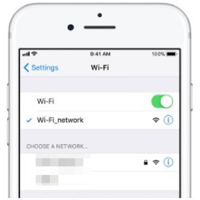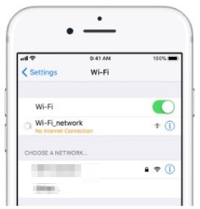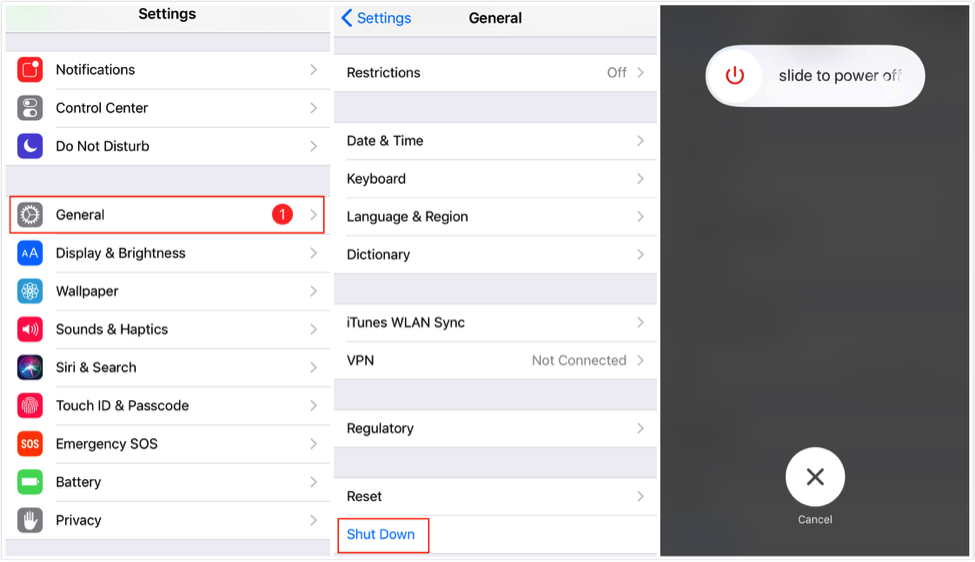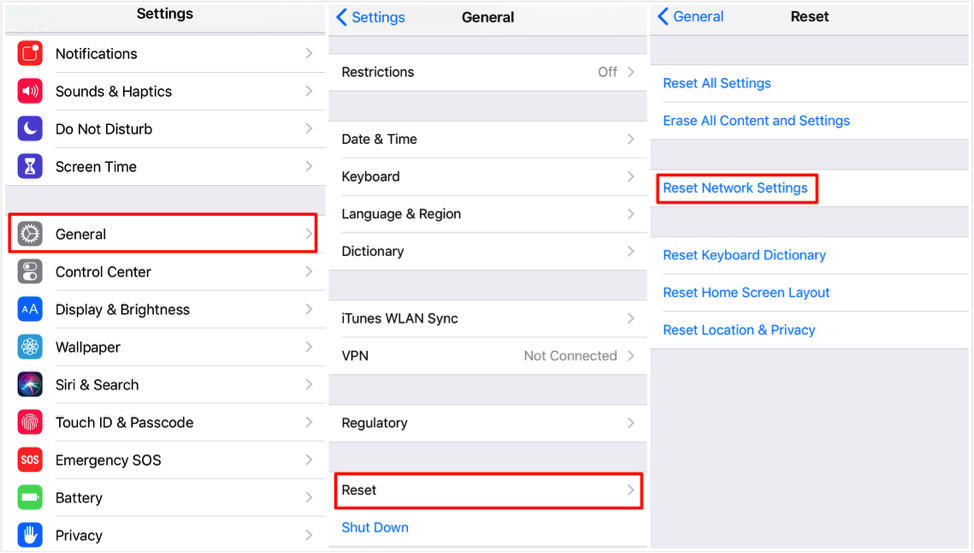How to Fix: iPhone/iPad Not Connecting to Wi-Fi
iPhone or iPad not connecting to Wi-Fi? Don’t worry. In this guide, we will show you 8 different yet simple ways to fix the iPhone/iPad will not connect to Wi-Fi issue quickly.
iPhone Network & Password Issues
You may have very different experiences with your iPhone not connecting to Wi-Fi. Problems with software or networking equipment may result in this Wi-Fi not connecting issue. Or you may witness an iPad not connecting to Wi-Fi because of password protection or due to network settings being set incorrectly. No matter what the reasons are, here are efficient solutions to help you get out of trouble with the iPhone or iPad will not connect to Wi-Fi problem.
8 Tips to Fix: iPhone/iPad Not Connecting to Wi-Fi
Method 1. Restart Your Router or DSL Modem
Your basic network equipment includes a router or a DSL modem, without which your iPhone will not connect to Wi-Fi. So, the first thing to check when lacking W-Fi connectivity in your home or office is whether the networking hardware is working.
- Unplug and then plug once again your router or modem.
- Check if the router is connected to the modem and turned on.
- Check if you have Wi-Fi connection.
Method 2. Check You Are Within Network Range
As you probably know, every networking equipment can cover only a limited area. This applies to industrial equipment as well, so your iPhone may not be connecting to Wi-Fi simply because you are out of range.
- Check the Wi-Fi signal strength on your iPhone/iPad.
- Try getting within range if you are too far away from your router or modem.
Method 3. Check If Wi-Fi Is On and You See Your Network

Fix iPhone/iPad will Not Connect to Wi-Fi – Check Wi-Fi
Your iOS device can detect all Wi-Fi networks within range but this function needs to be turned on, of course. You may see your iPad not connecting to Wi-Fi simply because you have not turned on the Auto Join function for Wi-Fi networks. Check it:
- Go to Settings on your device and tap on WLAN.
- Check if WLAN is on.
- Tap on the name of a network to join.
- Check if there is a blue checkmark next to a network, showing that you have connection.
Method 4. Check if Wi-Fi Password is Required
A growing number of Wi-Fi networks require a password to connect. This is a best practice that provides a very basic security layer but is still useful against sniffing devices that scan for free Wi-Fi networks. Make sure you know the passcode for the network you want to join.
- Your router should have a label with the default password on it.
- Check or ask for the password for a public Wi-Fi.
- Enter the password for the Wi-Fi network, if asked.
- Restart device, if you get “Unable to join the network” or “Incorrect password” message.
- Enter the correct Wi-Fi password once again.
Method 5. Check for Wi-Fi Network Issues

Fix iPhone/iPad Not Connecting to Wi-Fi – Wi-Fi Issues
Your iOS is designed to automatically find Wi-Fi issues that result in your iPhone not connecting to Wi-F. Your iPad or iPhone will show a notification under the name of your Wi-Fi network if any problems are detected.
- Go to Settings and tap on WLAN.
- Check if any notifications are displayed.
- Tap on the Wi-Fi network to get more info.
Method 6. Restart your iPhone or iPad
If a Wi-Fi issue persists, you may need to restart an iPhone that is not connecting to Wi-Fi. Actually, it helps if you restart your iOS device from time to time. This helps the operating system with getting the required settings installed by updates to the operating system or your apps.
Force Restart iPhone X:
- Hold the Side button and either volume button until you see the slider.
- Drag the slider to turn off your device.
- Wait for a while.
- Hold the Side button once again until the Apple logo appears.
Force Restart iPad and iPhone 8 or Earlier:
- Hold the Top (or Side) button until you see the slider.
- Drag the slider to turn off your phone.
- Wait for a while.
- Hold the Top (or Side) button once again until the Apple logo appears.
You should also know that iOS 11 and iOS 12 allow you to shut down your device using the interface: Select Settings and tap on General > Select Shut Down.

Fix iPhone/iPad Not Connecting to Wi-Fi – Restart Device
Method 7. Update iOS and Other Firmware
Operating system updates are required for your device to run smoothly and get protection against exploits. Update the Apple software on your iPhone or iPad on a regular basis to get the latest functionality and security patches. Furthermore, update any firmware on your networking equipment to avoid scenarios when your iPhone will not connect to Wi-Fi.
- Select Settings and tap on General.
- Tap on Software Update.
Also, update the firmware on your Wi-Fi router and check if it supports your iOS product.
Method 8. Reset Network Settings
You may find that your iPhone will not connect to Wi-Fi even though you have applied all the fixes listed above. Then, you can try resetting all your network settings.
- Select Settings and tap on General.
- Tap on Reset and then choose Reset Network Settings.

Fix iPhone/iPad Not Connecting to Wi-Fi – Reset Network Settings
Keep in mind that resetting your network settings will remove all saved Wi-Fi networks and passwords. This action also resets cellular settings and deletes data about VPN and APN settings.
The Bottom Line
When your iPhone is not connecting to Wi-Fi, you need not panic. You can see an iPhone/ iPad not connecting to Wi-Fi under various circumstances and you can usually re-connect by applying one or more of the above fixes. If your iPhone/iPad will not connect to Wi-Fi even after you have applied all of the fixes, contact the nearest Apple support center as it means you may experience hardware problems with your iPhone or iPad.

Joy Taylor


Member of iMobie team as well as an Apple fan, love to help more users solve various types of iOS & Android related issues.
Screenify
AnyEnhancer
FocuSee
Vozard
AnyMiro
AnyMirror





